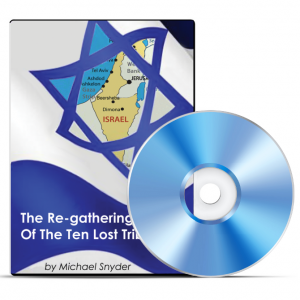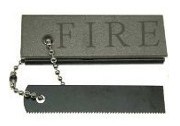
 In a time of economic uncertainty and rising food prices, it it always a good idea to have a garden to provide extra food for you and your family. Besides providing a source of food in an emergency, a garden is also a great source of wonderful vegetables which are MUCH healthier to eat than most of the food you can get at the supermarket.
In a time of economic uncertainty and rising food prices, it it always a good idea to have a garden to provide extra food for you and your family. Besides providing a source of food in an emergency, a garden is also a great source of wonderful vegetables which are MUCH healthier to eat than most of the food you can get at the supermarket.
So how do you begin? The following are 9 steps that you can take to get your garden started…..
#1) Decide What Your Goals Are – Do you want to grow enough just to add a few vegetables to your dinner once in a while? Do you want it to be able to provide enough food for your family if there is a major emergency?
Some people who want to live “off the grid” end up building a garden large enough that it will provide almost all of the food that their family needs. It is important to have an idea of what your goals for your garden are BEFORE you get started.
#2) Evaluate Your Land – Once you know what your goals are, you need to evaluate the land that you are currently living on. Is it big enough? Does it get enough sun? Will you need to put up a fence to keep wildlife away?
If you decide that you want a “mega-garden” but you live in a condo, then you may have to end up moving to achieve your goals. For example, we are unable to have the garden of our dreams where we currently live, and we are looking forward to moving and to having a really huge garden near our new home.
#3) Clear The Ground – You need to clear rocks, obstacles and all other plant life from the plot of soil where you plan to plant your garden. It is especially important to try to eliminate any weeds before you begin. Weeds will choke the life out of your young plants and you don’t want that.
#4) Improve The Soil – It is almost a certainty that you soil will need a boost. Trying to grow a garden without improving the soil is a difficult proposition at best.
So what is the solution? Add organic matter to your soil. Putting a three inch layer of compost, decayed leaves, grass clippings, or old manure on your garden should give your soil the boost it needs.
#5) Dig Up The Soil – Churning up the soil enables the roots of your new plants to penetrate more easily. It can be very difficult for your plants to penetrate ground that is very hard or very dry.
If you are able to loosen up the top 6 to 12 inches of soil that will help your garden immensely. As you dig, try to mix in the organic matter that we talked about in step four.
#6) Pick Your Seeds – This can be a tricky part. Each type of plant has different needs. Many grow better in some climates than in others. Some grow better in different areas of the country than others.
Most of the time you can find excellent directions on the seed packets that you buy. The good seed companies will even tell you the best time of the year to plant the seeds and what they will need over the course of their growth cycle.
#7) Put them in the ground – This will really make you feel like a farmer! Make sure to consult the directions for your particular seeds regarding how deep to plant them. If you plant your seeds too deep they will have trouble sprouting, but if you plant them too shallow they could get scorched by the sun or you may encounter other problems.
#8) Water Your Plants – This step can make or break your garden. All plants need water, but different types of plants need different amounts of water.
Get educated and figure out what each type of plant that you are growing needs. Then set up a plan and be consistent in executing it so that your garden will not be neglected.
#9) Keep Going And Never Give Up – Success in just about anything comes to those who refuse to quit. Perhaps your first experience with gardening will be a disaster. Perhaps it will be a smashing success. Whatever the case is, if you keep working and you don’t give up you will have the best chance for success in the long run.
When you are gobbling down all of those delicious vegetables from your garden all of your hard work will be worth it.










Pingback: The Prepper Movement: Why Are Millions Of Preppers Preparing Feverishly For The End Of The World As We Know It? | strivingforsurvival.com()
Pingback: 120 Powerful Pieces Of Advice For Preppers « thesurvivalplaceblog()